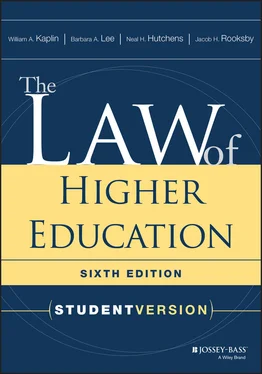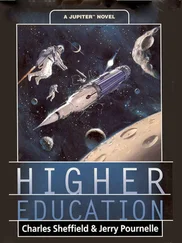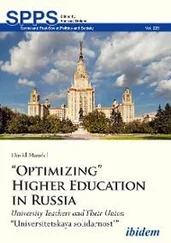Assess the legal risk (if any) to which the institution would be exposed (see Section 2.4) under policy options that the policy makers have proposed either in response to the attorneys' advice or on their own initiative
Participate in—and often take the lead in—drafting new policies and revising existing policies
Suggest legally sound procedures for implementing and enforcing the policy choices of the policy makers
Review existing institutional policies to ascertain whether they are in compliance with applicable legal requirements and whether there are any conflicts between or among existing policies
Make suggestions for enhancing the legal soundness of existing policies and reducing or eliminating any risk of legal liability that they may pose
Identify other legal consequences or by-products of particular policy choices (for example, that a choice may invite a governmental investigation, subject the institution to some new governmental regulatory regime, expose institutional employees to potential liability, or necessitate changes in the institution's relationships with its contractors).
Still other connections between law and policy are important for administrators and attorneys, as well as faculty and student leaders, to understand. One of the most important points about the relationship between the two, concerning which there is a growing consensus, is that policy should transcend law. This does not mean that policy should trump law but rather that policy is more than legal compliance, and the law leaves considerable room for policy making that is not dictated by legal considerations. Legal considerations, therefore, generally should not drive policy making, and policy making generally should not be confined to that which is necessary to fulfill legal requirements. Regarding internal policy, institutions that are serious about their institutional missions and goals will often choose to do more than the law requires. As an example, under Title IX of the Education Amendments of 1972, the courts have created lenient liability standards for institutions with regard to faculty members' harassment of students (see Section 8.5of this book). An institution will be liable to the victim for money damages only when it had “actual notice” of the faculty harassment and only when its response is so insufficient that it amounts to “deliberate indifference.” It is usually easy to avoid monetary liability under these standards, but doing so would not come close to ensuring the safety and health of students or ensuring that there is no hostile learning environment on campus. Institutions, therefore, would be unwise to limit their policy making regarding sexual harassment to only what the courts require under Title IX.
Policy, moreover, can become law—a particularly important interrelationship between the two. In the external realm of public policy, legislatures customarily write their policy choices into law, as do administrative agencies responsible for implementing legislation. There are also instances where courts have leeway to analyze public policy and make policy choices in the course of deciding cases. Courts may do so, for instance, when considering duties of care under negligence law, when determining whether certain contracts or contract provisions are contrary to public policy, and when making decisions, in various fields of law, based on a general standard of “reasonableness.” In the internal realm of institutional policy, institutions also sometimes write their policy choices into law. They do so primarily by incorporating these choices into the institution's contracts with faculty members; students, administrators, and staff; and agents of the institution. This incorporation may be accomplished either by creating contract language that parallels the language in a particular policy or by “incorporating by reference,” that is, by identifying particular policies by name in the contract and indicating that the policy's terms are to be considered terms of the contract. In such situations, the policy choices become law because they then may be enforced under the common law of contract whenever it can be shown that the institution has breached one or more of the policy's terms.
Finally, regarding the interrelationship between law and policy, it is important to emphasize that good policy should encourage judicial deferenceor academic deferenceby the courts in situations when the policy, or a particular application of it, is challenged in court. For internal policy, such deference would be given to the higher educational institution; for external policy, it would be given to the legislature or administrative agency whose policy is being challenged. Courts often defer to particular decisions or judgments of the institution, for example, when they are genuinely based upon the academic expertise of the institution and its faculty (see Section 2.2.2). It is therefore both good policy and good law for institutions to follow suggestions such as those outlined here, relying to the fullest extent feasible upon the academic expertise of administrators and faculty members, so as to maximize the likelihood that institutional policies, on their face and in their application, will be upheld by the courts if these policies are challenged.
1 1Terms appearing in bold face type are included in the Glossary, which is found in Appendix D.
2 2Much of the introductory content of this section is adapted from Kathleen Curry Santora and William Kaplin, “Preventive Law: How Colleges Can Avoid Legal Problems,” Chron. Higher Educ., April 18, 2003, B20 (copyright © 2004 by Chronicle of Higher Education, Inc.).
3 3For an overview of Congress's express powers, and an explanation of its implied powers, see William Kaplin, American Constitutional Law: An Overview, Analysis, and Integration (Carolina Academic Press, 2004), chapter 6, section B, Athrough F.
4 4Although this inquiry has arisen mainly with regard to the federal Constitution, it may also arise in applying state constitutional guarantees. See, for example, Stone by Stone v. Cornell University, 510 N.Y.S.2d 313 (N.Y. 1987) (no state action).
5 5This recognition that education, having a history of strong roots in the private sector, does not fit within the public function category was evident well before Rendell-Baker; see, for example, Greenya v. George Washington University, 512 F.2d 556, 561 (D.C. Cir. 1975). For the most extensive work-up of this issue in the case law, see State v. Schmid, 423 A.2d 615, 622–24 (majority opinion), 633–36 (Pashman, J., concurring and dissenting), 639–40 (Schreiber, J., concurring in result) (N.J. 1980). For another substantial and more recent work-up, see Mentavlos v. Anderson, 249 F.3d 301, 314–18 (4th Cir. 2001), discussed below in this subsection.
6 6The Washington Supreme Court's decision was reversed, on other grounds, by the U.S. Supreme Court in Gonzaga University v. Doe, 536 U.S. 273 (2002). The Supreme Court's decision is discussed in Section 7.8.1 of this book.
7 7The court also used public function analysis (see 249 F.3d at 314–18), rejecting the plaintiff's arguments based on this approach because the Citadel was not analogous to the federal military academies, and the institution and the cadets therefore were not performing the traditional sovereign function of training men and women for service in the U.S. Armed Forces.
8 8As Mentavlos suggests, if the harassers had been employees of a public institution rather than students, the employees would likely have been found to be engaged in state action. For a case reaching this result, see Hayut v. State University of New York, 352 F.3d 733, 743–45 (2d Cir. 2003).
9 9The status of Roemer and also Mitchell has been addressed at great length in Fourth Circuit litigation.See Columbia Union College v. Clarke, 159 F.3d 151 (4th Cir. 1998) (Columbia Union College v. Clarke I); Columbia Union College v. Oliver, 254 F.3d 496 (4th Cir. 2001) (Columbia Union College v. Clarke II).
Читать дальше












